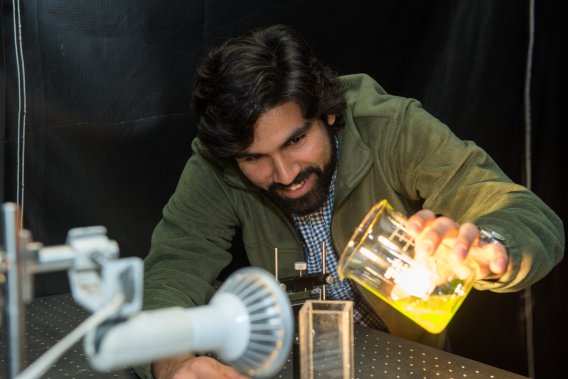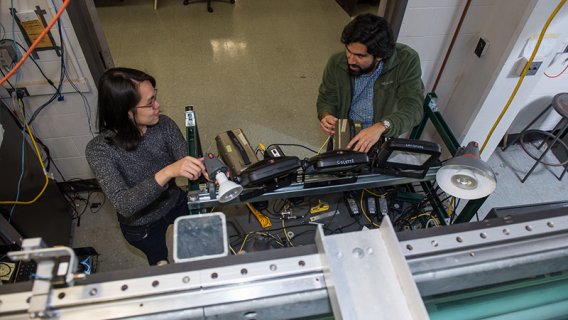Laboratories for Turbulent and Complex Flows
Director: E. Longmire, F. Coletti
Location: 30 and 9 Akerman Hall

These laboratories specialize in the experimental study of turbulent and multiphase flows. Akerman 30 has a large wind tunnel, a large recirculating water channel, and a recirculating pipe flow facility. Experiments are in progress to investigate fundamental properties of turbulent boundary layers, the motion of large particles in boundary layers, and laminar-to-turbulent transition in multi-phase and multi-fluid pipe flows. Akerman 9 includes facilities for investigations covering a range of applications, including fish/plankton interactions, particle-laden flows, flow within the lungs, and interfacial flows.

Diagnostic equipment includes multiple pulsed and continuous laser systems (Photonics, Oxford, New Wave, and Ion Technologies) for illumination, a laser Doppler anemometer system, a laser Doppler vibrometer, a Nikon microscope, and multiple digital cameras (including single frame, dual frame, and high frame rate). The cameras are used for both visualization (including laser induced fluorescence, object tracking, and particle tracking) and particle image velocimetry (PIV). Planar, stereo, and tomographic PIV are all employed to investigate velocity variations within the flows. An overhead traverse above the water channel facility allows for flying PIV that traverses with eddies in the flow. Oscilloscopes, a spectrum analyzer, electronic timing boxes, signal generators, and filters are also available for the experiments. Multiple computers are employed for experimental control, data acquisition, and data processing.
Experimental set-up: Particle Image Velocimetry (PIV) is used to identify and dynamically track discrete objects and evolving turbulent flow structures.
